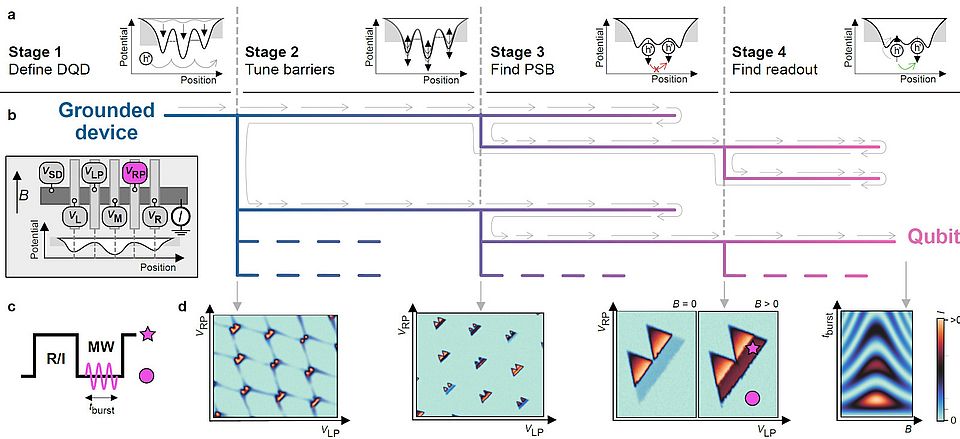On arXiv: Fully autonomous tuning of a spin qubit

Identifying optimal operating conditions for semiconductor qubits is a highly complex process, involving the exploration of a vast parameter space. This presents a real ‘needle in the haystack’ problem, which, until now, has resisted complete automation due to device variability and fabrication imperfections.
In this study, we present the first fully autonomous tuning of a semiconductor qubit, from a grounded device to Rabi oscillations, a clear indication of successful qubit operation. We demonstrate this automation, achieved without human intervention, in a Ge/Si core/shell nanowire device. As a demonstration of the potential of full automation, we characterise how the Rabi frequency and g-factor depend on barrier gate voltages for one of the qubits found by the algorithm.
Twenty years after the initial demonstrations of spin qubit operation, this significant advancement is poised to finally catalyze the operation of large, previously unexplored quantum circuits.
Collaboration between the Ares group (Oxford University) and Zumbühl group (University of Basel), also supported by the EU FP7 RIA European Microkelvin Platform and the NCCR SPIN of the Swiss NSF.
Fully autonomous tuning of a spin qubit
Jonas Schuff, Miguel J. Carballido, Madeleine Kotzagiannidis, Juan Carlos Calvo, Marco Caselli, Jacob Rawling, David L. Craig, Barnaby van Straaten, Brandon Severin, Federico Fedele, Simon Svab, Pierre Chevalier Kwon, Rafael S. Eggli, Taras Patlatiuk, Nathan Korda, Dominik Zumbühl, and Natalia Ares,
arXiv:2402.03931 (Feb 6, 2024), manuscript pdf
